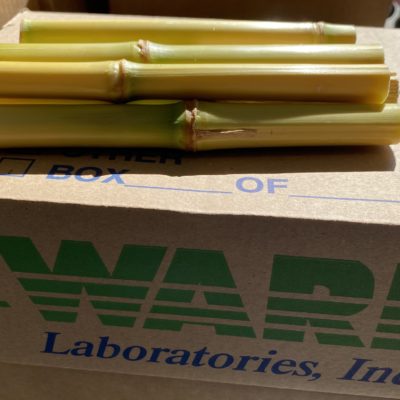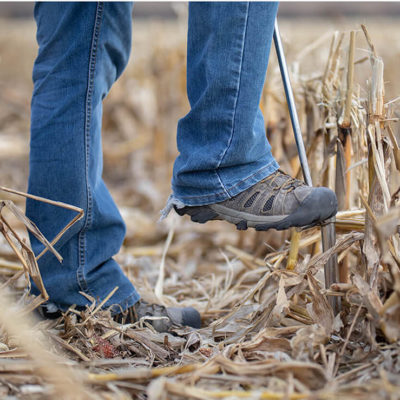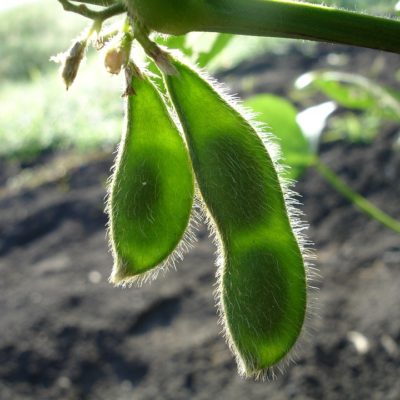One of the most common issues that arise in customer service at an agricultural testing laboratory is the dispute over different results for samples meant to represent the same whole. That whole could be a specific field, a stack of hay bales, a bin of mixed feed or plants within a field. This is where the statistical theory of sampling in agriculture becomes very important.
At the basic level the theory of sampling is ensuring the selected sample accurately represents the whole. This could be the nutrient status of a soil in a specific field. Or, the whole could be the forage quality parameters in a haystack. These are just a few examples where the theory of sampling is key. Proper sampling will ensure making the right decision based on lab analysis.
Once your sample arrives at Ward Laboratories, Inc. we have set protocols to ensure that our test portion (the sub-sample used for analysis) represents the whole sample submitted to us. In the feed testing department, we even periodically ‘resplit’ samples to evaluate our precision and accuracy. Laboratory technicians then take their test portions, which may be 0.5g to represent tons of a forage sample!
So, what does the theory of sampling in agriculture have to do with you, the sampler?
Challenges in primary sampling
Primary sampling is what we call the initial sample that is collected. There are several challenges encountered by the primary sampler.
First, is the heterogeneous nature of the material to be samples. For example, in hay analysis, hay has leaves and stems and these need to be proportional in the sample as they are in the hay bale, let alone the entire stack. Further, soil sampling represents an entire field that may have varying topography, different soil types and edge affects where equipment turns or overlaps.
Second, is collecting enough mass to represent the sample, but is also a reasonable mass to submit to the lab. As mentioned earlier, the heterogeneous nature of most agricultural materials means we need to collect sufficient mass to represent the different particles and constituents.
The third challenge is access to the materials. This can be especially challenging when we are sampling from grain bins, truck loads, silage bags or piles. This can pose issues with obtaining a representative sample. In these cases, it might be beneficial to sample overtime or as the material is used and adjust as necessary.
Best practices for primary sampling
1. Use the proper sampling tool.
This can be a soil probe, hay probe, or a scoop. Be sure not to simply use your hands as you will lose the smallest particles of your sample.
2. Use your sampling tool as intended.
Soil probes should be used to monitor and control sampling depth. Sample depth can vary based on the preference of the collector, but all samples must be collected with consistent depth. Our guidance is to pull samples 0-8 inches for the top soil and 8 – 24 inches for subsoil analysis. Hay probes should be used to core hay bales at 18 inches.
3. Collect an appropriate amount of sample.
For soil sampling we recommend pulling a minimum of 15 to 20 cores for each sample that should represent no more than 40 acres. 8-12 cores are recommended for grid sampling. These cores should then be combined and mixed before being reduced into one sample bag. For hay analysis, we recommend a minimum of 20 hay cores for a stack of hay containing 100 or more bales. Proper sample volumes allow the lab to run additional or quality control tests if needed.
4. Provide proper identification and description of the sample.
When submitting your sample to the lab, you should assign a meaningful ID. A meaningful sample ID will allow you to know what your sample represented when you took it. Sometimes we hear from customers who submitted samples with IDs 1, 2, 3 and they do not remember what those numbers were assigned to. Describing the sample as soil or forage type can also help the lab assign the correct testing. Further, the reviewer can do a better job ensuring no lab errors were made if they know more about the sample.
In conclusion, the theory of sampling in agriculture analysis is key to understand when pulling samples to ensure accurate data to make well informed decisions. If samples submitted to the lab are not accurate and reliable, the lab data also cannot accurately represent the decision-making unit. Ward Laboratories, Inc. has many resources available to help guide you in obtaining a good representative sample!




